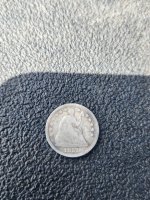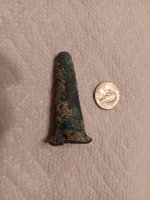The photos show 2 rocks. My main interest is the larger one. These are common field finds in my part of Iowa. I believe the small one may be magnetite. Both rocks have iron content and hold a magnet easily.
The larger one has a much higher density. I’ve looked at many on-line sources. Magnetite or hematite pop up often. To me, none of the examples look like this one.


To me, it resembles granite, in mass/weight, crystal content and coloration. I’m not thinking any value. I just would like to do a positive ID.
Thanks for any help.👍🏼
The larger one has a much higher density. I’ve looked at many on-line sources. Magnetite or hematite pop up often. To me, none of the examples look like this one.
To me, it resembles granite, in mass/weight, crystal content and coloration. I’m not thinking any value. I just would like to do a positive ID.
Thanks for any help.👍🏼






